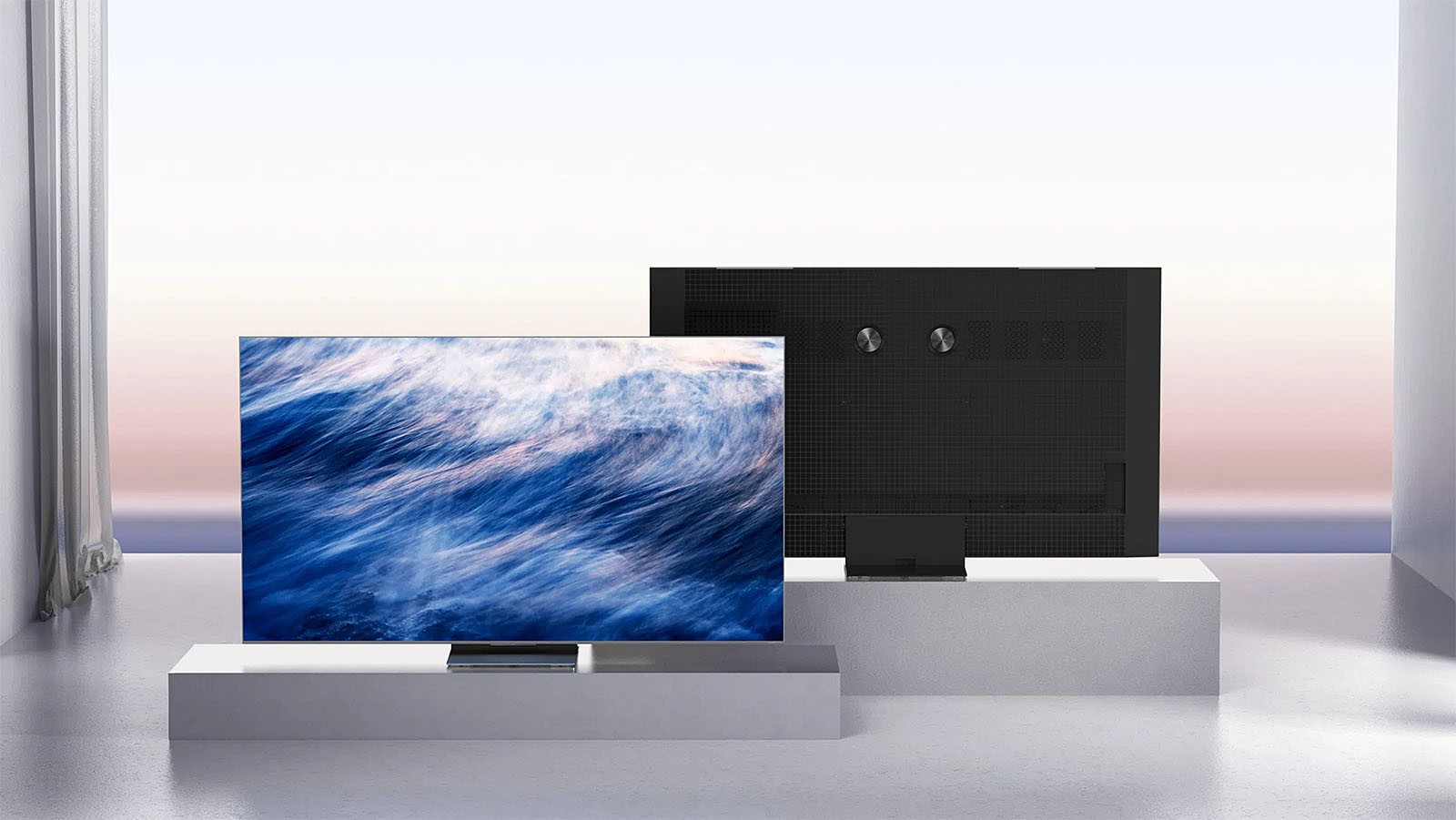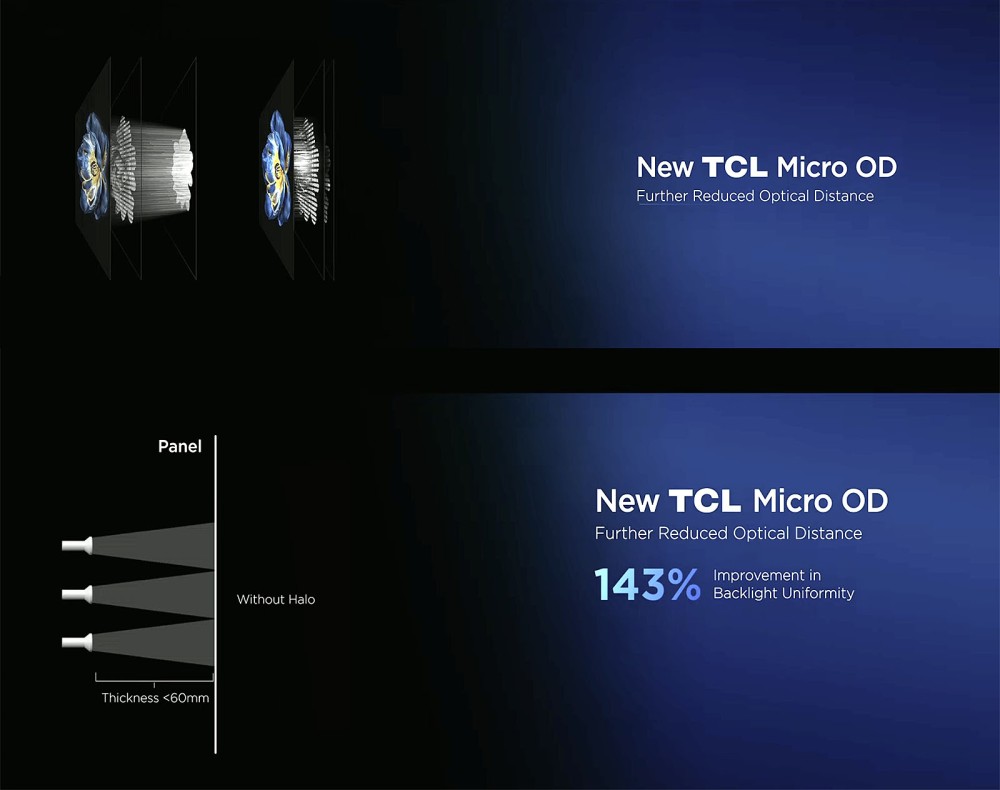
For the rest, we find a native 10-bit [abc]Ultra HD[/abc] [abc]4K[/abc] panel and a refresh rate of 144 hertz. Another notable development compared to the information given in March is the number of zones. The C9K series televisions boast a huge number of backlight zones: 3,024 zones for the 65" model, 4,032 zones for the 85" model and 5,194 zones for the 98" model (compared to 2,160, 2,888 and 5,148 initially announced respectively).
These diffusers are equipped with very small diodes, measuring 100 microns, equipped with a lens that improves the light diffusion angle to 160°, compared to 130° for previous models. This lens not only improves screen uniformity by reducing the Clouding phenomenon by 60.63%, but also minimizes Blooming, which appears as halos around bright elements on a dark background thanks to an optimized shape for a significantly better controlled light path (less leakage and less disruption of neighboring diodes). Also worth knowing about the diodes that equip this seventh generation Mini LED, their brightness is 33% higher than the previous generation while consuming approximately 40% less energy.
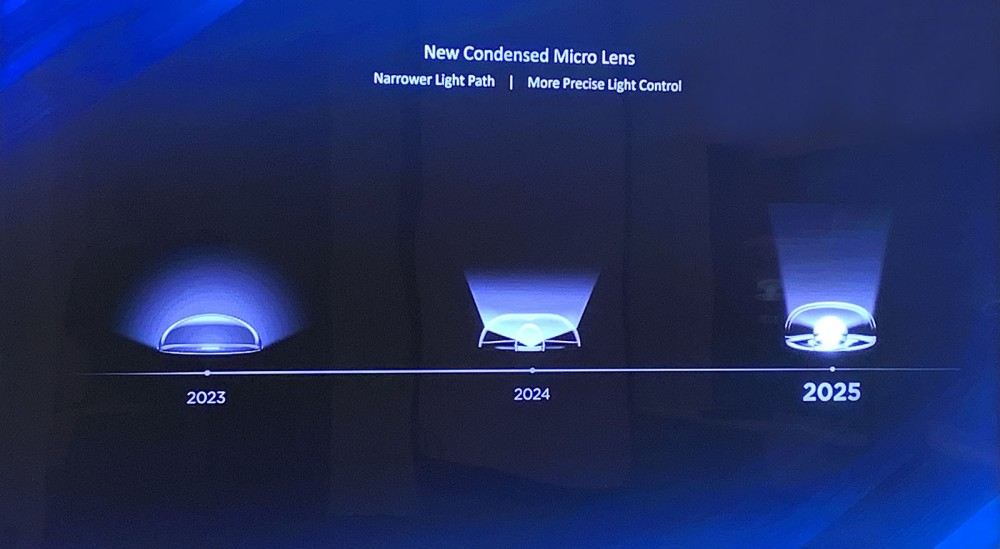
Of course, the backlighting system of the TCL C9K integrates the technological advances of the previous models, TCL C89B or TCL X955. The LED diodes used are identical in terms of colorimetric characteristics, guaranteeing optimal image homogeneity. In addition, these LEDs are capable of changing state very quickly, making it possible to eliminate shadows on moving objects thanks to Direct Drive technology. This precise control of brightness, on 23 bits, is carried out on notoriously more than 65,536 levels and ensures faithful reproduction of the slightest image variations. Thus, these are taken into account and reproduced on the screen for increased realism. As a result, the luminous halo phenomenon is reduced by 96%, good news for better control of Blooming linked to the transmissive LCD technology.
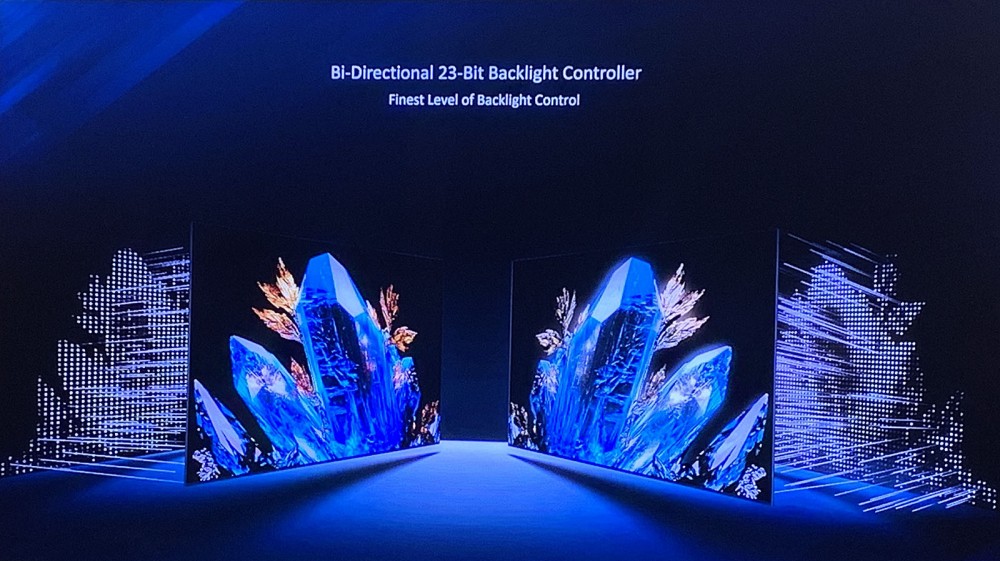
Similarly, TCL announces that the diodes of the 7th generation Mini LED are capable of changing state extremely quickly, a time less than that required to display an image, even with a 120 hertz signal. Thus, there is no latency between the signal and the response of the diodes, which until now was the cause of a slight blur in the image and a lack of dynamics. TCL calls this capacity of its Mini LED 2025 system Zero Delay Transient Response.
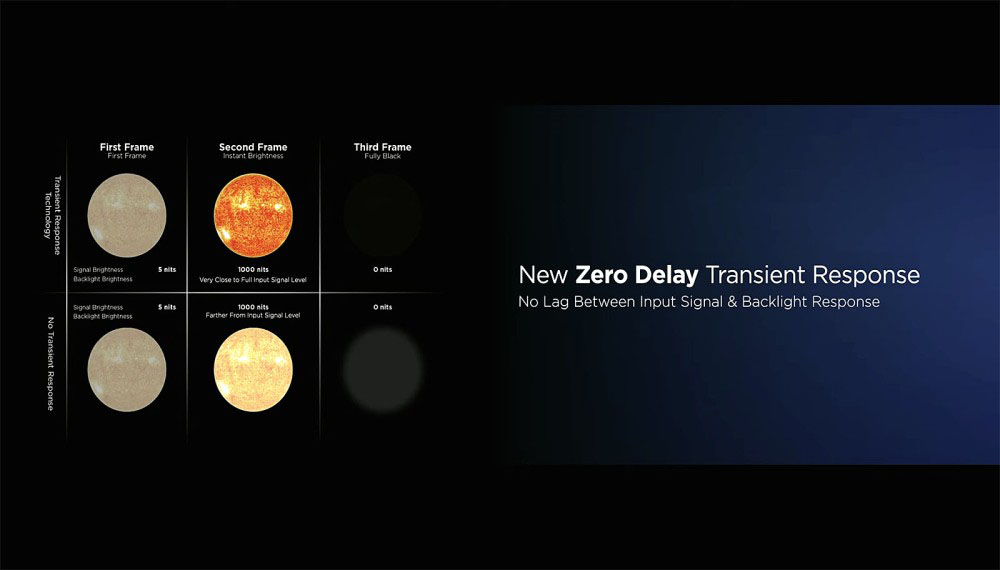
To conclude the hardware improvements of this 7th generation Mini LED signed TCL, we must mention the Crystglow WHVA Panel process. Already reported in our news relating to the Samsung TV range 2025, this offers a wider viewing angle, more or less equivalent to that of IPS LCD panels, combined with a high-performance anti-reflective coating.
TCL C9K, technical characteristics and connectivity££££
The TCL C9K displays an impressive peak brightness of 6,000 nits and incorporates QLED Pro technology allowing 97% coverage of the DCI-P3 gamut thanks to nanocrystals with a new alloy for a more pronounced reaction to light. TCL mentions more "vibrant" nanocrystals and increased longevity, 100,000 hours of viewing in the best conditions, that is to say while benefiting from preserved Quantum Dots qualities (before degradation). The management of HDR10, [abc]HDR10+[/abc], [abc]HDR10+ Adaptive[/abc] and [abc]HDR Dolby technologies Vision[/abc], combined with the Dolby Vision IQ feature (brightness sensor), is a must. We can also mention the Filmmaker mode, Imax Enhanced certification, 120 Hz MEMC motion compensation and an anti-blue light mode. All implemented by the AiPQ Pro processor. Namely, a Dolby Vision Filmmaker Mode is planned via [abc]Firmware[/abc] update by the end of 2025.
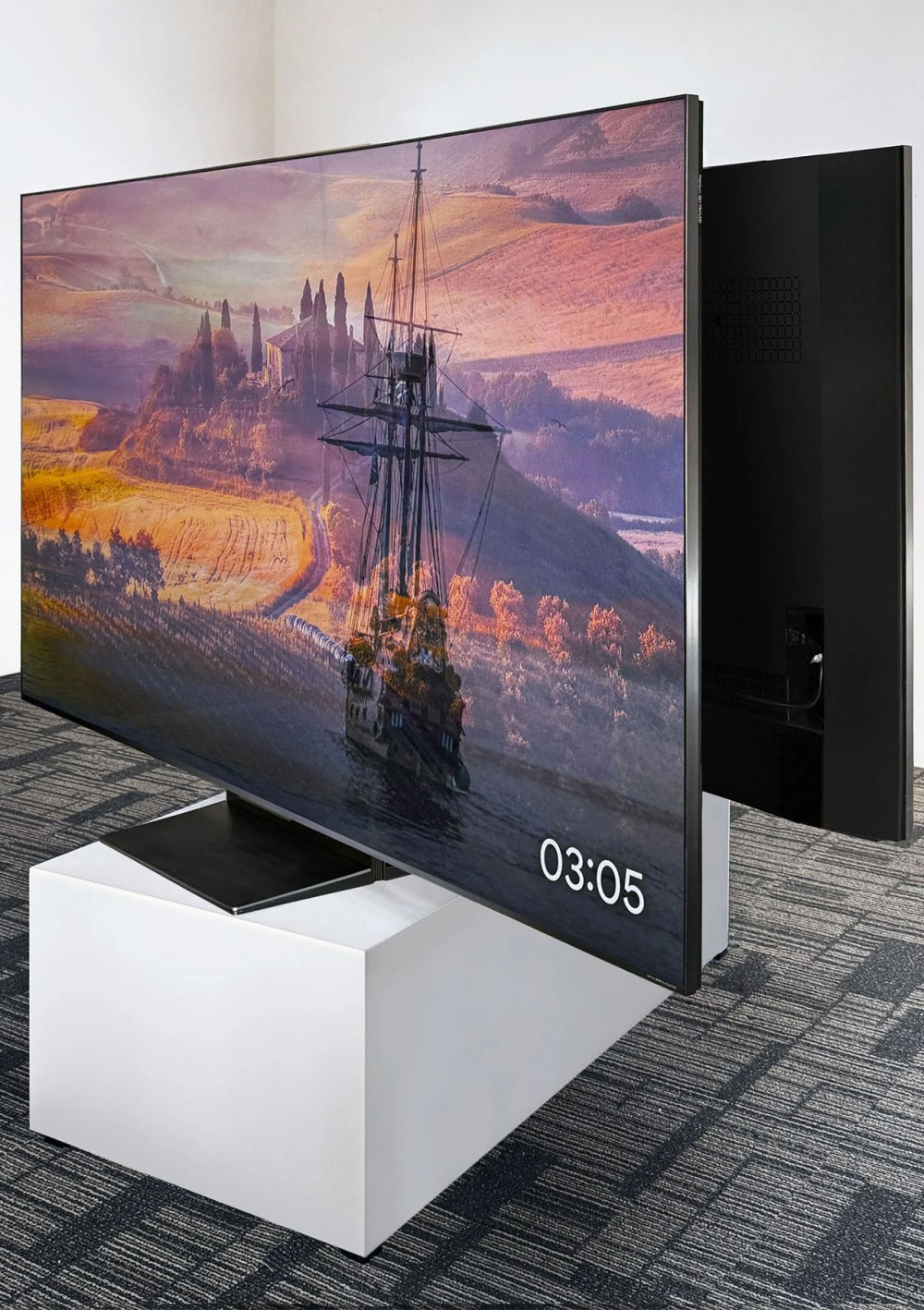
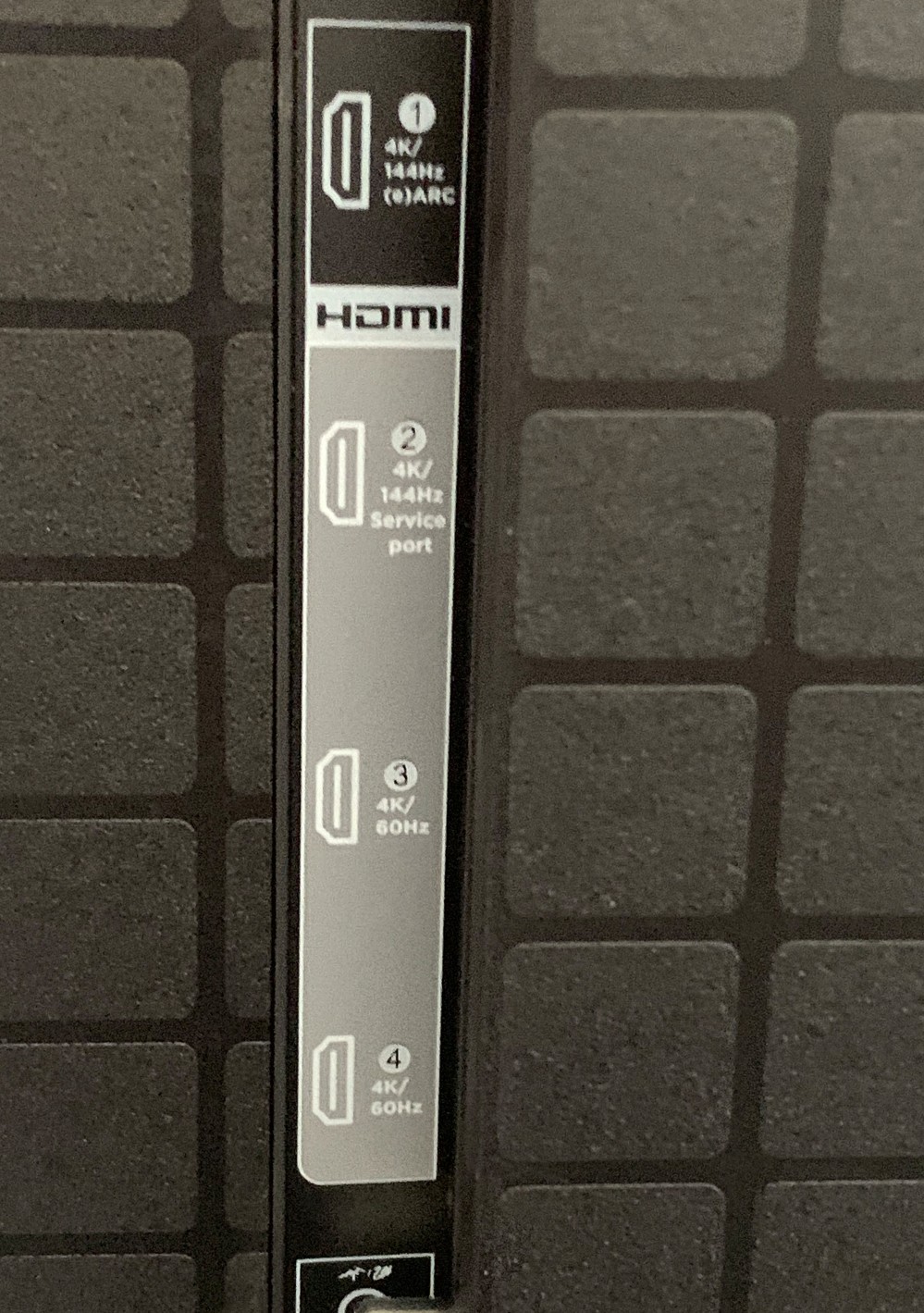
In terms of connectivity, the TCL C9K televisions are equipped with four [abc]HDMI[/abc] ports called [abc]2.1[/abc] (in fact one [abc]HFR[/abc] 4K/144, one [abc]HFR[/abc] 4K/120 and two 60 Hz, Pentonic 700 chip) [abc]eARC[/abc], [abc]VRR[/abc] and [abc]ALLM[/abc] certified. Other connectors include an [abc]optical[/abc] output, a [abc]USB[/abc][abc]3.0[/abc] port, a USB Host 2.0 port, an [abc]Ethernet[/abc] port, a headphone output and a [abc]CI+ port[/abc].

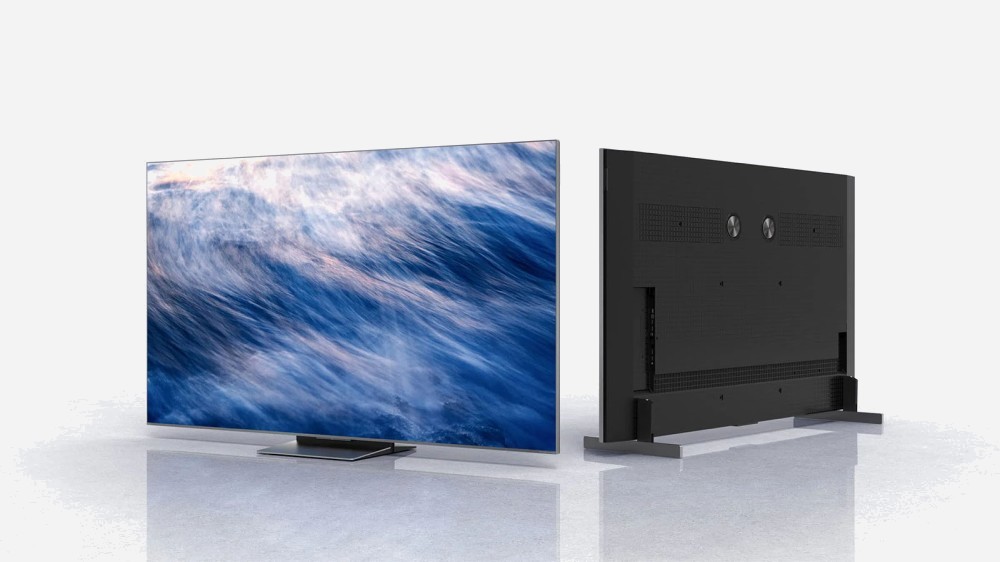 TCL C9K, Smart Google TV££££ As for Smart TV features, the TCL C9K TVs run on Google TV (Android 12) and support [abc]Wi-Fi[/abc] 6 connectivity as well as [abc]Bluetooth[/abc] 5.2. [abc]AirPlay 2[/abc] and HomeKit certifications, as well as compatibility with Alexa, are also present, allowing for seamless integration into a connected environment. Finally, the TCL C9KH TVs are ready for the Gemini voice assistant intended to replace Google Assistant in the coming months (see our news Google Assistant is over).
TCL C9K, Smart Google TV££££ As for Smart TV features, the TCL C9K TVs run on Google TV (Android 12) and support [abc]Wi-Fi[/abc] 6 connectivity as well as [abc]Bluetooth[/abc] 5.2. [abc]AirPlay 2[/abc] and HomeKit certifications, as well as compatibility with Alexa, are also present, allowing for seamless integration into a connected environment. Finally, the TCL C9KH TVs are ready for the Gemini voice assistant intended to replace Google Assistant in the coming months (see our news Google Assistant is over). 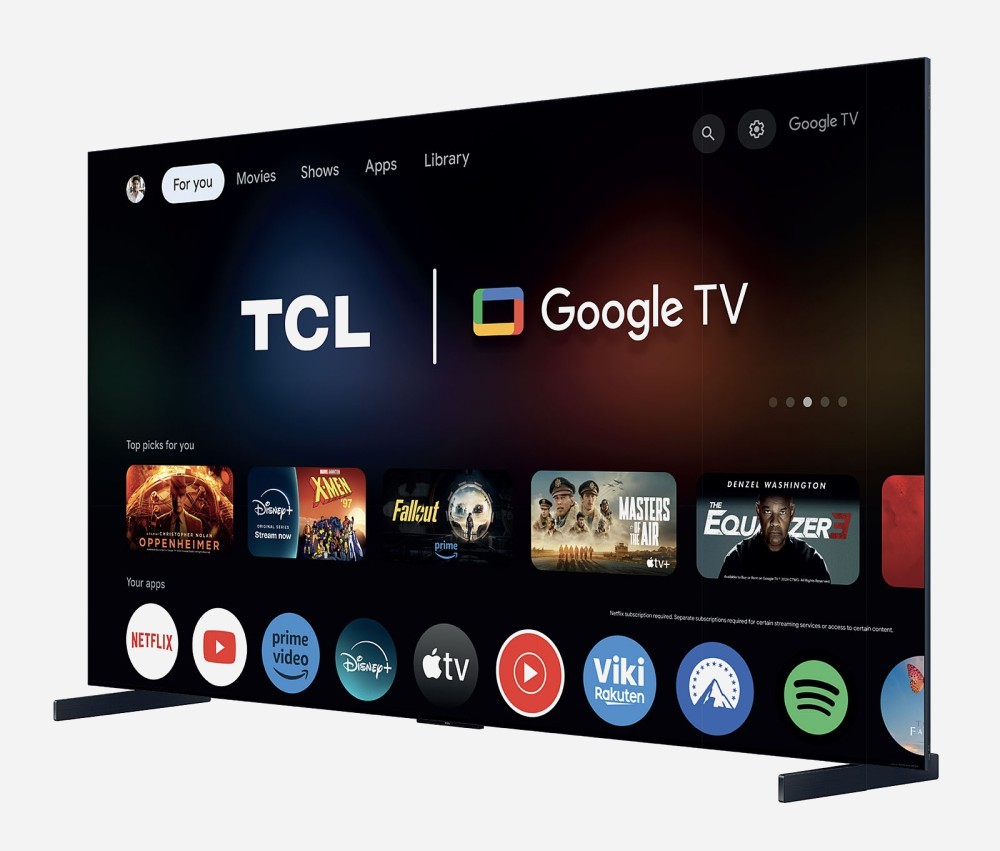
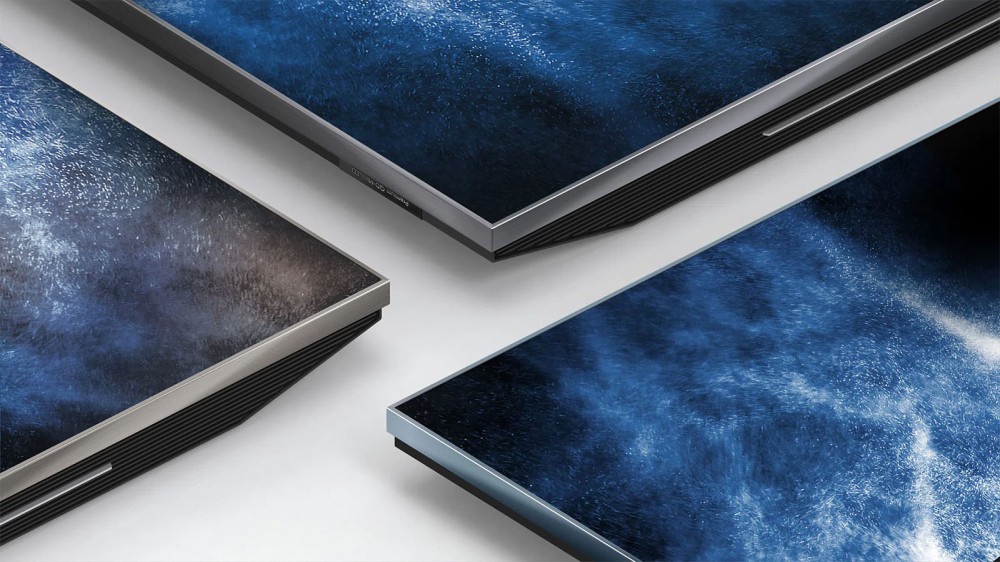 Finally, DLG (Dual Line Gate) technology is present. The latter, by reducing the vertical resolution by half (therefore in [abc]1080p[/abc] and not [abc]2 160p[/abc]), offers a 288 Hz display for a smoother and more enjoyable gaming experience. TCL C9K, minimalist design££££ Another remarkable feature of the TCL C9K TVs is the almost complete disappearance of the LCD panel frame. This is still visible at the bottom of the LCD panel but is very thin everywhere else (see photos above and below). If we add to this an image that literally licks the edge of the screen (the black surround of the matrix is now just a memory, the image now occupying 100% of the panel), the final result is absolutely splendid. Sober, elegant, prestigious! Last detail, the TCL C9K TVs benefit from a central stand.
Finally, DLG (Dual Line Gate) technology is present. The latter, by reducing the vertical resolution by half (therefore in [abc]1080p[/abc] and not [abc]2 160p[/abc]), offers a 288 Hz display for a smoother and more enjoyable gaming experience. TCL C9K, minimalist design££££ Another remarkable feature of the TCL C9K TVs is the almost complete disappearance of the LCD panel frame. This is still visible at the bottom of the LCD panel but is very thin everywhere else (see photos above and below). If we add to this an image that literally licks the edge of the screen (the black surround of the matrix is now just a memory, the image now occupying 100% of the panel), the final result is absolutely splendid. Sober, elegant, prestigious! Last detail, the TCL C9K TVs benefit from a central stand.  0 Availability expected at the end of May. Indicative prices: €1,999 for the TCL 65C9K, €2,999 for the TCL 75C9K and €3,999 for the TCL 85C9K. UPDATE: Following an exchange with Marek Maciejewski, Director of Product Development (TCL Europe), the above news has been corrected and completed. Details on the HDMI 2.1 connectors, the WHVA nature of the LCD panel, and not HVA as initially announced, of the Freesynsc Premium Pro or the release date postponed to the end of May have been added.
0 Availability expected at the end of May. Indicative prices: €1,999 for the TCL 65C9K, €2,999 for the TCL 75C9K and €3,999 for the TCL 85C9K. UPDATE: Following an exchange with Marek Maciejewski, Director of Product Development (TCL Europe), the above news has been corrected and completed. Details on the HDMI 2.1 connectors, the WHVA nature of the LCD panel, and not HVA as initially announced, of the Freesynsc Premium Pro or the release date postponed to the end of May have been added.  1
1
Reminder of the key characteristics of the TCL C9K TVs:
• 10-bit panel
• [abc]LCD[/abc] VA panel
• [abc]Ultra HD[/abc]/[abc]4K[/abc] panel
• Coating Crystglow WHVA Panel
• 144 Hz Panel
• Processor: Quad Core
• Mega Contrast Enhancement Function
• Wide Color Gamut Function
• UHD Color Extender Function
• Media Gateway Function [abc]UPnP[/abc] ([abc]DLNA[/abc])
• DVR Function
• [abc]eARC[/abc] Function
• [abc]VRR[/abc] Function
• [abc]ALLM[/abc] (Auto Low Latency Mode) Function
• 4K [abc]HFR[/abc] 120 Function
• Quantum Dots Function
• UHD Super Resolution Function
• Game Master Pro 2.0 Function
• DLG 288 Hz Function
• AiPQ Pro Function
• [abc]HDR10[/abc] and [abc]HDR HLG[/abc]
compatibility• [abc]HDR10+[/abc]
compatibility• [abc]HDR10+ Adaptive[/abc]
compatibility• [abc]Miracast[/abc]
compatibility• [abc]HDR Dolby Vision IQ[/abc]
compatibility• [abc]HEVC[/abc]
compatibility• [abc]Dolby Atmos[/abc]
compatibility• [abc]HBBTV[/abc]
compatibility• FreeSync Premium Pro compatibility
compatibility• [abc]CEC[/abc]
compatibility• [abc]Canal Ready[/abc]
compatibility• [abc]Bluetooth[/abc] 5.4
• DTS Virtual:X Compatibility
• [abc]DTS-HD[/abc] Compatibility
• [abc]HDCP[/abc] 2.2 Compatibility
• [abc]Wi-Fi[/abc] ax Compatibility
• [abc]Chromecast (built-in)[/abc] Compatibility
• Filmmaker Mode
• Imax Enhanced Certification
• Outputs: 1 optical, 1 headphone
• Inputs: 4 [abc]HDMI[/abc] 2.1 inputs, 1 USB Host 3.0 port, 1 USB Host 2.0 port, 1 Ethernet port, 1 [abc]CI+ port[/abc]
• Multimedia [abc]AirPlay 2[/abc]
• HomeKit Multimedia
• Google Assistant Multimedia
• Works with Alexa Multimedia
• Google TV Multimedia
• Google Gemini Multimedia
• MEMC Motion Compensation
• Mini [abc]LED[/abc] Backlight System [abc]Local Diming[/abc]
• Input Lag: < 6 ms
• Number of Zones: 3,024 on the 65", 4,032 on the 75" and 5,194 on the 85"
• Peak Brightness: 6,000 nits
• [abc]DVB-T[/abc]2 Tuner
• [abc]DVB-C[/abc] Tuner
• [abc]DVB-S[/abc]2 Tuner
• Sound Section: 6.2.2
• Power: 90 W
• Energy label: G
